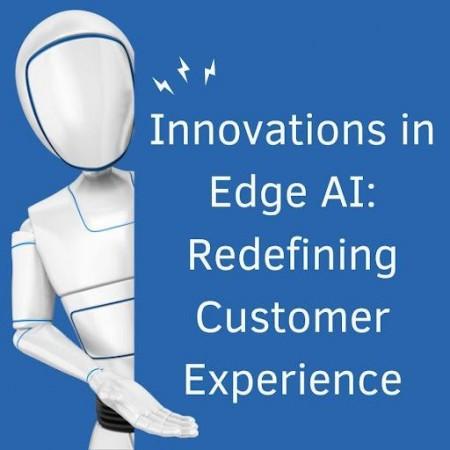
In the dynamic field of enterprise architecture, Saumya has emerged as a leading innovator, blending technical expertise and strategic vision to drive transformative business outcomes. With over 16 years of experience, Saumya exemplifies how thoughtful integration of artificial intelligence (AI) into enterprise systems can redefine organizational agility and efficiency.
Bridging Strategy and Technology
Saumya’s journey began in Odisha, India, where an early fascination with computers sparked a lifelong passion for problem-solving. From assembling hardware to programming, his curiosity evolved into a career dedicated to bridging technology and business strategy. After earning a degree in computer science during the 2008 recession, Saumya took on roles that placed him at the intersection of technical innovation and strategic impact.
“I’ve always believed that technology is more than just a tool—it’s a strategic enabler,” he says. This philosophy has driven his career, enabling him to deliver high-stakes projects that align technology with business goals. At Salesforce, his initiatives drove over $30 million in annual revenue growth. At Edelman Financial Engines, his efforts led to $200 million in additional asset inflows. These achievements reflect his ability to turn strategic objectives into measurable results.
Transforming Enterprise Architecture with AI
AI has been central to Saumya’s approach to enterprise architecture. Recognizing AI’s potential to optimize processes, enhance decision-making, and modernize legacy systems, he has pioneered its integration into enterprise frameworks.
At Salesforce, Saumya implemented predictive modeling to improve sales forecast accuracy and increase opportunity close rates. By embedding AI-driven insights into sales processes, he enabled organizations to transform inefficiencies into opportunities for growth.
Similarly, at Edelman Financial Engines, Saumya led AI integration efforts that revolutionized customer engagement. A modular AI architecture reduced prospect response times from two days to two minutes, resulting in $54 million in asset inflows within three months. His leadership also boosted advisor productivity by 30%, demonstrating AI’s ability to harmonize speed, efficiency, and scalability.
Overcoming AI Integration Challenges
While AI offers transformative possibilities, its implementation comes with challenges. Saumya emphasizes the need to address both technical and cultural barriers for successful integration.
“Legacy systems often lack the infrastructure needed for AI,” he explains. “Upgrades and re-architecting are crucial but must be balanced with organizational readiness.” Saumya also highlights the importance of data quality and model transparency, especially in regulated industries, where trust and compliance are essential.
To navigate these challenges, Saumya adopts a collaborative approach, fostering partnerships between AI specialists and traditional development teams. “AI is only as powerful as the people who use it,” he notes, underscoring the importance of change management. His ability to align technical strategies with cultural contexts ensures seamless adoption and long-term success.
Designing Future-Ready Architectures
Saumya’s contributions go beyond immediate solutions, focusing on creating systems that adapt to evolving business landscapes. During his keynote at the 2024 Open Group Summit, he introduced a roadmap for integrating AI into enterprise systems. His approach emphasized modular architectures, optimized data pipelines, and predictive modeling, enabling organizations to respond proactively to market shifts.
“AI is fundamentally changing how businesses operate,” Saumya says. “It allows us to predict trends, optimize workflows, and deliver personalized experiences at scale.” His strategies showcase how AI can be a catalyst for agility and innovation, transforming traditional enterprise systems into dynamic, adaptive frameworks.
Driving Change Through Leadership
Leadership is central to Saumya’s success. His ability to bridge technical and strategic domains positions him as a trusted advisor to C-suite leaders. At Salesforce, he conducted capability gap analysis, designed future-state architectures, and led workshops on data strategy and governance. These initiatives empowered stakeholders across all organizational levels to embrace AI-driven transformations.
Saumya’s leadership philosophy emphasizes collaboration and proactive risk management. By fostering mutual understanding between teams and aligning AI initiatives with key performance indicators (KPIs), he ensures that innovations deliver measurable business value.
Inspiring the Next Generation
Beyond his technical contributions, Saumya is a dedicated mentor and thought leader. He has shared his expertise at prominent events like DREAMFORCE and The Open Group Summit, inspiring audiences to view technology as a driver of transformation. His presentations provide actionable insights, from leveraging Salesforce to optimize operations to using AI to enhance business agility.
Looking ahead, Saumya is exploring the potential of generative AI to revolutionize customer engagement and sales performance management. “Generative AI can anticipate customer needs and streamline complex workflows,” he says. He is also focused on emerging technologies like federated learning and edge AI, which promise to address challenges such as privacy and latency.
A Legacy of Innovation
Saumya’s work exemplifies the profound impact of aligning technology with strategic goals. From driving revenue growth to fostering cultural change, his contributions have transformed how organizations navigate the complexities of digital transformation.
In an era defined by rapid technological advancement, Saumya’s ability to combine technical acumen with strategic insight makes him a vital force in enterprise architecture.










